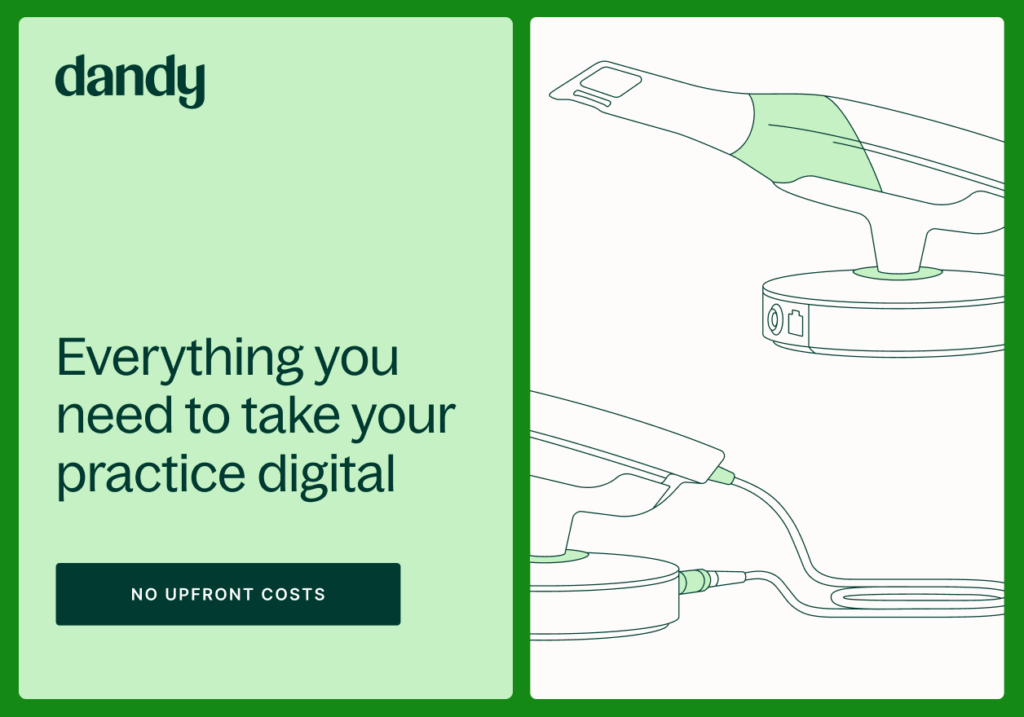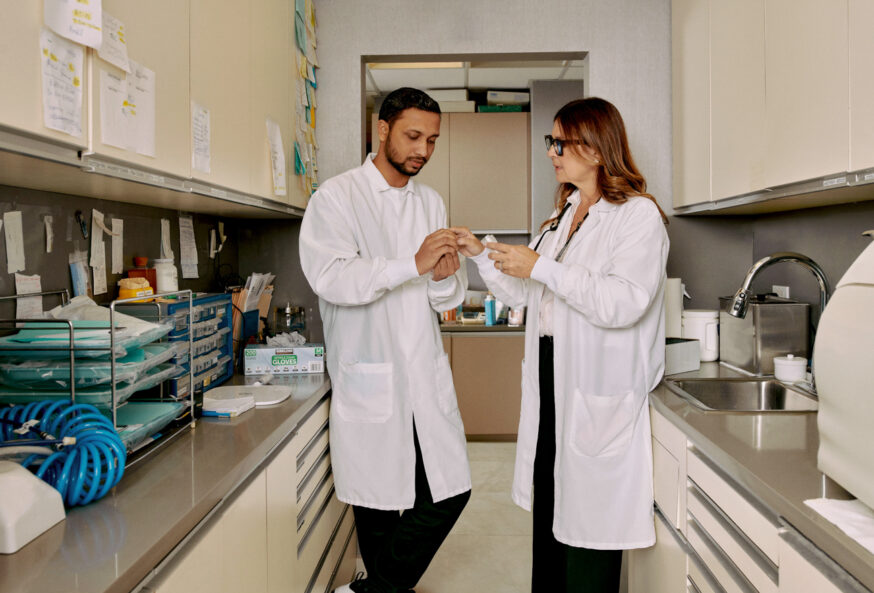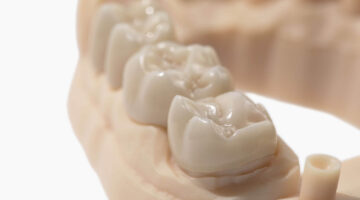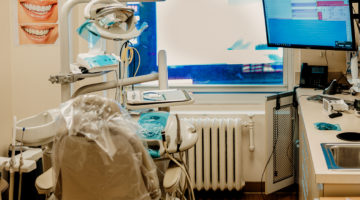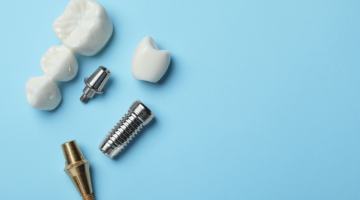The need for accurate impressions forms the clinical cornerstone of successful dental practices but if you are still using the traditional method, they can be costing your practice big bucks.
Over the last decade, dentistry has seen a rise in the adoption and the innovation of digital intraoral scanners as a more modern solution to taking oral impressions. Taking impressions with digital intraoral scanners offers many advantages compared to its older counterparts with few downsides.
This pursuit of digital dentistry stems from the need to address factors like patient comfort, ease, accuracy, stability, cost-effectiveness, precision and application versatility. Learn about the modern alternative to PVS impression materials, exploring its unique purposes and applications in shaping the future of dental impressions.
What is a PVS impression?
The traditional dental impression technique involves injecting polyvinyl siloxane, referred to as PVS impression material, into an impression tray and applying it to the patient’s mouth to get the specific model that aids final restoration. This process can be uncomfortable, cause gag reflexes, and create anxiety in some patients, especially those with a sensitive gag reflex or those who find the sensation unpleasant.
What is the modern way of taking a dental impression?
Digitalization and technological innovations have led to the emergence of intraoral scanners for taking oral impressions. An intraoral scanner is a handy, wand-like tool, used in scanning the surface of the oral structure. The digital intraoral scanner is fast and comfortable and has significantly transformed the impression-taking process. It offers real-time visualization, minimizes patient discomfort, improves accuracy, and facilitates efficient communication between you and your patient. Overall, it offers seamless integration into digital workflows, including treatment planning, designing dental restorations, and fabricating orthodontic appliances.
This digital impression has proven to be at the advantage of the dentist and patient, more than the previously used impression, as it uses optical imaging and laser scanning, to create a detailed virtual model of the patient’s oral anatomy. With the digital intraoral scanner, you won’t have to worry about errors and distortion, unlike the transitional PVS impression that might require physical shipping, which can introduce delays and the potential for errors and storage distortions during transit. Also, digital impressions help reduce operational expenses or accumulated costs over time, as there is almost no need for regular restocking.
Digital impression vs. traditional PVS impressions
Digital impressions and traditional PVS impressions are two distinct methods of capturing dental impressions for various dental procedures.
Traditional Polyvinyl Siloxane (PVS) impressions are used by dentists to create models of a patient’s mouth. This impression process requires a dry mouth, while the dentist applies the PVS (a putty-like substance) to both the heavy and light body material on the impression tray, then in the patient’s mouth. This is to gently fit the tray into the patient’s mouth in order to capture the precise shape and arrangement of the oral structure. Traditional impressions utilize impression materials to produce a mold-ready product for labs, including materials such as PVS, 3M ESPE, VPS, and polyether.
On the other hand, digital impression is a process that involves using digital technology, such as intraoral scanners, to capture the patient’s teeth and surrounding oral structures, turning them into a virtual 3D image. By moving the wand-like tool over the surface of the patient’s teeth, it creates a virtual model of the hard and soft tissues of the mouth, through the aid of a monitor.
This technology is prone to replace the conventional use of physical moulds to create impressions, as they offer advantages such as higher accuracy due to advanced imaging technology, speed, real-time visualization, elimination of uncomfortable materials, and enhanced patient communication by providing immediate visual feedback.
Comparing both techniques, there are four important areas to look out for during the practice:
- Patient experience
- Impression accuracy
- Chairside time, and
- Material cost.
The patient experience
The evidence of a successful practice is shown in the patients’ experience. A positive experience comprises comfort, convenience, cost-effectiveness, accuracy, stability, time-saving and ease. Comparing both techniques, the PVS impression remains somewhat unfortunate to the above-mentioned attributes.
More times than usual, using PVS material in the PVS dental process breeds discomfort from the ends of the patient. In the bid to get an accurate impression, the patient is prone to suffocating, gagging and awkward experience of trying to insert the PVS material.
Due to the discomfort, digital dentistry has been a breakthrough in this area, offering ease and saving time. Digital impressions aid relaxation, as the process doesn’t require so much except the intraoral scanner. The dentist inserts the small and discreet scanner tip into the mouth and scans all through the surface of the oral structures while the patient comfortably opens their mouth. This process doesn’t require the gagging or suffocating breath of patients; instead, it incites a comfortable patient experience.
The most critical part of the practice remains the time-saving and convenience of the patient. We curated ways in our Dandy Dental Study: Patient Experience that help dentists ensure their patients feel valued, respected, and well-cared-for throughout their interactions, leading to improved satisfaction, trust, and overall well-being.
Accuracy of impression
Inaccurate impressions can lead to multiple patient visits and materials. The most crucial aspect of garnering accurate impressions is ensuring the impressionist knows which type of technique to use according to the procedure.
Traditional impressions are still widely regarded for producing highly accurate impressions. Due to PVS material’s ability to contour around soft tissue and form around intricate details, it is heralded for its ability to produce highly accurate results. Ensuring the impression material is formatted correctly, and set is crucial for such effects. While PVS accuracy is high, the difference between traditional and digital accuracy is more significant, seen only in specific cases.
Digital impressions use optical scans to reproduce a virtual model of the patient’s mouth. Digital impressions utilize cutting-edge dental technology, such as interlaced mapping through software and state-of-the-art optical sensors, which allow dentists to take highly accurate impressions in most cases. When combined with a CAD/CAM team for case review and design, digital impressions offer a highly detailed impression with the added benefit of digital impression retention. Digital impression retention lets labs retain the impression data and reproduce restorative work without needing a new impression from the patient.
The accuracy of both impression techniques is similar. Clinicians who do not regularly need extreme detail for unique cases should feel comfortable utilizing digital impressions for most of their caseload. Traditional impressions may provide an incremental accuracy advantage for highly specialized or unique procedures. As technology advances, digital impressions are expected to produce even more accurate models than traditional PVS impression material can provide.
Chairside time
The chairside is the amount of time the patient spends on the chair with the dentist. The time consists of every moment, throughout the dental procedure. It is important to understand that seeing a dentist is not the only activity for the patient, which is why it’s important to reduce the chairside time with the patient.
The presumed normal time for a PVS impression should be 18-20 minutes. This time frame includes the use and placing of the PVS and impression tray on the patient, to allow it to fit perfectly into the oral structure. The dentist might as well spend time to get a fitting impression tray for the patient. There’s also a possibility of retaking the impression in order to get accuracy. All this points down to making the patient spend beyond the already-speculated time, thereby shortening your chances of seeing more patients as supposed.
Conversely, the digital impression is the opposite of whatever the PVS dental offers, using the PVS materials. This not only makes it easier but saves time for both the dentist and the patient. It creates a possibility to reach out to as many patients as possible while still upholding accuracy, which avoids any form of retaking the impression.
Cost of material
Every practice owner understands one fundamental principle that governs their dental practice operations: time is money. Increasing efficiency across workflows and decreasing operating costs are integral to the success of every practice. Practices using PVS impressions experience a more challenging time optimizing both of these levers as the actual cost of PVS impressions doesn’t stop at investment in the silicone material. Traditional impression methods increase chairside time costing practitioners upwards of $36,000 in production costs per year. When combined with the material cost of each impression and the negative experience it provides patients, the actual price could be detrimental to practice success.
When considering the adoption of intraoral scanners for digital dental impressions, it’s important to take into account the initial cost of the scanner, first. If you are partnering (or looking to partner) with labs that are equipped to handle digital impressions, consider potential financial implications.
Partnering with a lab that accepts digital impressions is important, in order to maximize the benefits of the digital workflow, ensure a streamlined communication process, and reduce costs associated with impression materials and shipping. This decision can overall impact your dental practice, efficiency and patient experience, potentially leading to cost savings over time. Partnerships with these labs help reduce material consumption and shipping expenses associated with traditional impressions.
Embracing digital dentistry and exploring partnerships with labs that accept digital impressions can empower your dental practice to stay competent and competitive while delivering higher-quality care, and positioning you for a more efficient and cost-effective future. Learn more about how to choose the best lab for your dental practice.
